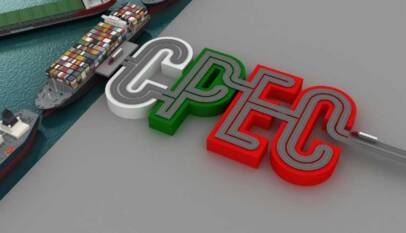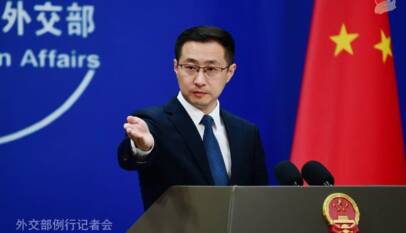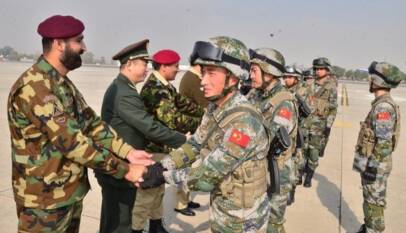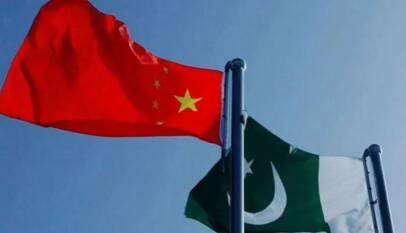Prospects of the 2nd phase of China Pakistan Free Trade Agreement
China-Pakistan Free Trade Agreement (CPFTA-II) to give much needed boost in bilateral economic relations. It is pertinent to understand what CPFTA-II has to offer for the economic development of Pakistan. China has eliminated tariffs for Pakistan on 313 high-priority tariff lines that earlier ranged from 3.5 to 35% before the signing of CPFTA-II. Also, 311 out of 313 tariff lines are part of Chinese imports and in 2018, a 301 tariff lines from this group were reported to be part of Chinese imports of worth $67 billion. However, Pakistan can avail two options: either to enhance its export capacity within the existing product lines mentioned in CPFTA-II or expand and broaden its product lines. The government of Pakistan should diversify its export base and capacity by inviting private sectors partnership under the newly developed industrial zones of CPEC. Also, the issue of non-tariff barriers to product lines out of CPFTA-II need to be addressed.
Under the second phase of the China-Pakistan Free Trade Agreement (CPFTA-II), China has immediately eliminated tariffs for Pakistan on 313 high-priority tariff lines. The government is celebrating its success, whereas the critics are questioning the relevance of these concessions for Pakistan. It is therefore important to take an objective look at these concessions and answer some pertinent questions.
What was the applicable duty on these 313 tariff lines before signing the CPFTA-II? Does China import these products and does Pakistan have any capability to export them? What are the most promising export opportunities for Pakistan and how can we capitalise on them?
The applicable duty on these 313 products ranged from 3.5 to 35 per cent, which has now been brought down to zero, and these products do form an essential part of China’s import bucket. In fact, China imported 311 out of these 313 tariff lines, within the last three years. In 2018 alone, China imported about $67 billion worth of goods across 301 tariff lines from within this group.
Pakistan, on the other hand, exported 167 of these tariff lines to the world in 2018, accounting for more than a quarter of its exports, and 86 tariff lines to China, claiming 47 per cent of its China-export bucket. Our exports to the world signify that we do have manufacturing capacity for these products, and we are competitive enough to export, whereas our exports to China further imply that we already have an established Chinese market in these categories.
There are two types of trajectories that can be taken from here: expand the volume of exports in the existing product lines or expand and diversify our product offering to China to include products not previously exported.
It is interesting to note that 95 per cent of our exports within these 86 lines concentrated only on 10 products, belonging to four categories: cotton yarn; apparel and clothing accessories; sheep and goat leather; and frozen flat fish. Therefore, while all these 86 lines would immediately benefit from zero duty, the most benefit will be enjoyed by these ten products. However, without reversing the declining cotton crop or reviving the struggling textile industry, even cotton yarn or apparel exports are not going to be a win.
The real opportunity therefore would be to use the concessions to expand and diversify our export offering. Looking within these 313 tariff lines, the top Chinese imports with about $35 billion import market do include promising opportunities such as the $5.5 billion gear shifts of motor vehicles with previously 10 per cent duty; $4.2 billion frozen meat with 6 per cent duty; $2.6 billion food preparations with 18.4 per cent duty; billion dollar-markets for cherries and footwear with previously 5 per cent duty, etc. It is now for the private sector to explore these areas and focus on new product markets that have opened up.
The government also needs to put its act together. It needs to spread awareness and provide diagnostics especially around these massive new promising segments. Pakistan, for instance, does export frozen meat, food preparations and milk and cream (in solid forms) to the world, but not to China. There is a need to explore why not. If there are any non-tariff barriers, those need to be addressed. Similarly, for products like gear shifts and auto parts, where we have the manufacturing footprint but not exports, there is a need to use the newly-developed special economic zones (SEZs) to bring in investment and technology to plug into global value chains in the automotive industry.
If we do it right, there is no reason why Pakistan cannot break into the big Chinese market and become an important trading partner with China.
Chinese Ambassador highlights significance of Third Plenary Session for China-Pakistan cooperation
The Third Plenary Session of the 20th Central Committee of the Communist Party of China ha…













